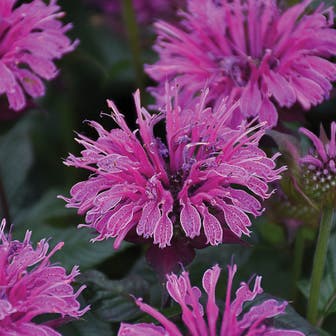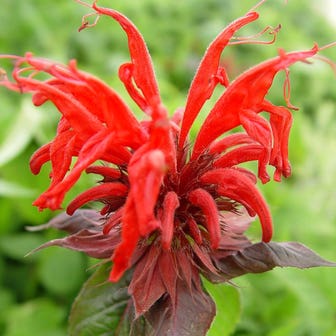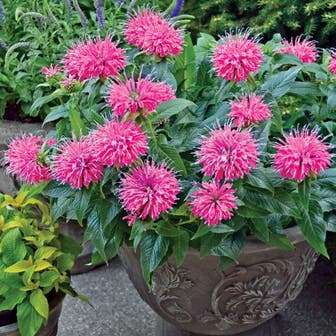
Checkout using your account
Checkout as a new customer
Creating an account has many benefits:
- See order and shipping status
- Track order history
- Check out faster
- Home
- Flower Seeds & Plants
- Bee Balm Plants & Seeds
Bee Balm Plants & Seeds
The Monarda genus contains herbaceous perennials, commonly called bee balms, that bloom abundantly throughout summer and into fall, depending on cultivar and climate. A popular perennial plant, monarda is grown for its minty, aromatic foliage as well as its unusual blooms.

An important food source for specialized bees, swallowtail butterflies, and ruby-throated hummingbirds
Monarda has distinguishing rounded and ruffled clusters of elongated, tubular, two-lipped flowers and whorls of colorful bracts that are unique for perennial plants. Typically, bold shades of purple, red, pink, or white, the frilly flowers make excellent cut flowers, but more importantly, they are a wildlife food source that supports specialized bees, bumblebees, swallowtail butterflies, and ruby-throated hummingbirds, among many others.
Monarda is a genus of about 20 species native to North America, naturally growing in moist woodlands and fertile bottomlands, mostly in Canada and the U.S. Species of horticultural importance include M. didyma (Oswego tea, bergamot, crimson or scarlet bee balm), the showiest of the wild monarda and most commonly used; M. punctata (spotted or dotted bee balm, horsemint), the most distinguishing and unusual; M. fistulosa (wild bergamot), a highly fragrant bee balm; and M. citriodora (lemon bee balm, lemon horsemint, lemon bergamot), a bee balm with tiered globular clusters. Many hybrids are also available. Bee balms grow in dense, upright clumps, generally 2 to 4 feet high and 2 to 3 feet wide. The plant is perfect for naturalized areas, especially in wildflower meadows, along streams, and around ponds, as well as for pollinator and cottage gardens; and its easy nature and fun flowers make it a welcome addition in children’s gardens.
Monarda thrives in full sun and organically rich, medium to wet soils but tolerates partial shade and heavy soils. Good air circulation is a must to discourage disease. Deer and rabbits tend to leave it alone.










